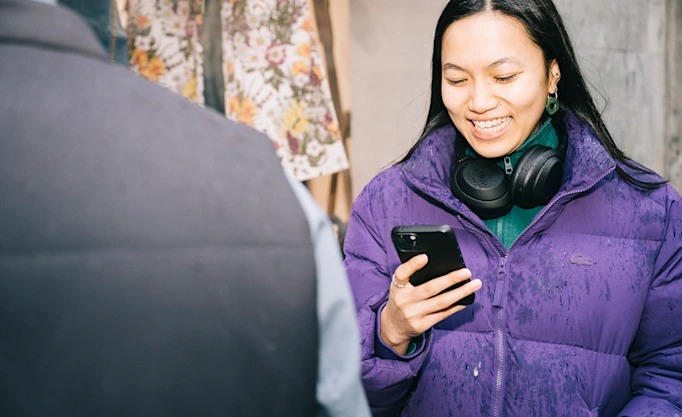Greenly: Reducing carbon footprint one bank account at a time

Greenly has been live for just one year, but it’s already the force behind 2.5 million people in France not only measuring and understanding their carbon footprint – but improving it. Now, in a new partnership with Tink, Greenly has its sights set on taking its app across Europe, and putting banks at the centre of its plans to help shift behaviour, by making it simple to offer a carbon tracker on individual and business bank accounts.
Greenly has teamed up with Tink to take its carbon footprint tracking app across Europe.
Greenly is also making it simple for European banks to offer carbon trackers in their own user experience, through Greenly’s API.
With the new Tink partnership, Greenly will aggregate transaction data directly from users’ bank accounts, to analyse their carbon footprint and help reduce it.
Can you imagine driving a car without a dashboard showing you how fast you're going or how much fuel is left in the tank? According to Greenly’s founder Alexis Normand, exactly the same principle should be applied to understanding our carbon footprint. We shouldn’t imagine our lives without a dashboard that shows the environmental impact of our behaviour.
Alexis came up with the concept for Greenly after working in the health sector for many years. ‘We tracked people’s health vitals to give them an incentive today to help solve a problem that would materialise in the distant future – which is the same mindset as the vision for Greenly. We’re effectively trying to prevent carbon obesity with open banking technology.’
According to Greenly, Europeans have an individual carbon footprint of around 15 tonnes of CO2 a year on average. To meet the EU goal of being carbon neutral by 2050, the figure needs to be more like 3.5 tonnes. So Greenly is stepping in to help people and businesses easily understand and track their carbon footprint, while helping them change their behaviour in a meaningful way. It’s not only doing this through its consumer app and for businesses, but also working with banking giants such as BNP Paribas in France, to offer carbon tracking to its customers through their banking app. So how does it work?
Calculating carbon
In a nutshell, Greenly automatically tracks the impact of every expense a person makes, and puts this into a dashboard to show them what to focus on to reduce their carbon footprint – and rewards them for taking action.
This works by teaming up with Tink in a new partnership, to aggregate the transaction data from bank accounts across Europe. ‘We sub, sub, sub categorise every transaction we identify,’ says Alexis. ‘Then we use a method called the Monetary Emissions Ratio to quantify the environmental impact of that purchase.’
For its app users, it’s relatively straightforward to calculate the carbon footprint of taking a flight, the energy consumed in a home or fuel purchased. But when it comes to something like someone’s grocery spend it gets a bit more complicated, because Greenly can’t see exactly what’s in the cart.
This is where user profile data comes into the mix. Greenly asks its users questions such as what their average meat consumption is, if they buy organic, and the packaging or wrapping used. A calculation can then be based on the average footprint of the average cart at that specific store, based on the user’s average behaviour. ‘You can be a purist about it and try to work out the difference between buying this carrot or that tomato, but the bigger behavioural picture is more important with more potential for impact, such as changing your overall meat consumption,’ says Alexis.
And it’s working. The users who engage with their dashboard at least every two weeks have a carbon footprint 20% lower than the average Greenly user.

Not just for big business
Understanding the carbon footprint of a business has traditionally been for big corporations. But smaller companies are under increased pressure to do the same. Partly in anticipation of regulation, but mostly because employers and employees recognise they’re a successful company, and wonder why they're not doing anything on climate impact.
Today, any business can create its own carbon tracking dashboard as easily as an individual can, because Greenly has automated what is usually a very time intensive and manual process. ‘Our hypothesis was that we needed to put some tech into it,’ says Alexis. ‘Excel spreadsheets are great – but they’re 30 years old.’
So Greenly adapted what it does for consumers to take to businesses. Instead of a consultant asking for invoices and data, they automatically collect it straight from the business bank account. Greenly estimates 60% - 70% of a businesses carbon footprint can be worked out from its transactions and expenses. The rest, such as staff commuting, computer usage and building size, can then be gathered by Greenly’s platform. Then Greenly can help businesses start with the low hanging fruit to improve their carbon record, encouraging them to reduce emissions rather than start with offsetting, which is much more costly in the long run.
Alexis believes that businesses shouldn’t be afraid of being transparent about their carbon footprint. ‘It’s not about being good or bad, and you can’t improve something you don’t measure. It’s better to start with a bad record and commit to improving it than doing nothing at all.’
A European standard
Today, the Greenly app is live in France, with plans to expand across Europe in early 2021. ‘We are working with Tink not to only create a standard for carbon tracking in France, but to essentially create a European standard,’ said Alexis. ‘Tink has the widest European offering for open banking connectivity, so they’ve already done the work for us in covering the largest geographical scope.’
Greenly’s API that enables banks to offer a carbon tracker in their own customer experience is already available across Europe. ‘Banks have a big role to play in funding services for both business and individual customers, to help them reduce carbon and change their behaviour,’ added Alexis. ‘Innovation in this area is moving fast. They need to be six months ahead on this, before they’re ten years too late.’
Are you curious about how open banking technology can benefit your business? Check out what you could build with Tink.
More in Use cases

2024-12-17
7 min read
User experience: Wealthify empowers customers’ financial wellness with Pay by Bank
Tink partner Wealthify uses Pay by Bank for the optimal PFM, investment and saving experience, thanks to easy account top ups and secure account-to-account payments.
Read more

2024-08-12
11 min read
Six ways open banking helps remittance
Learn all about remittance, and how open banking can help it happen more smoothly with six of our best tips. From reducing friction, to simplifying compliance processes, and much more.
Read more

2022-06-30
4 min read
How Again is using transaction data to drive change
Using open banking to drive sustainable change: Swedish climate fintech Again is partnering with Tink to end greenwashing. Their app leverages transaction data to accelerate the climate transition by offering valuable user data to sustainable brands.
Read more
Get started with Tink
Contact our team to learn more about what we can help you build – or create an account to get started right away.
